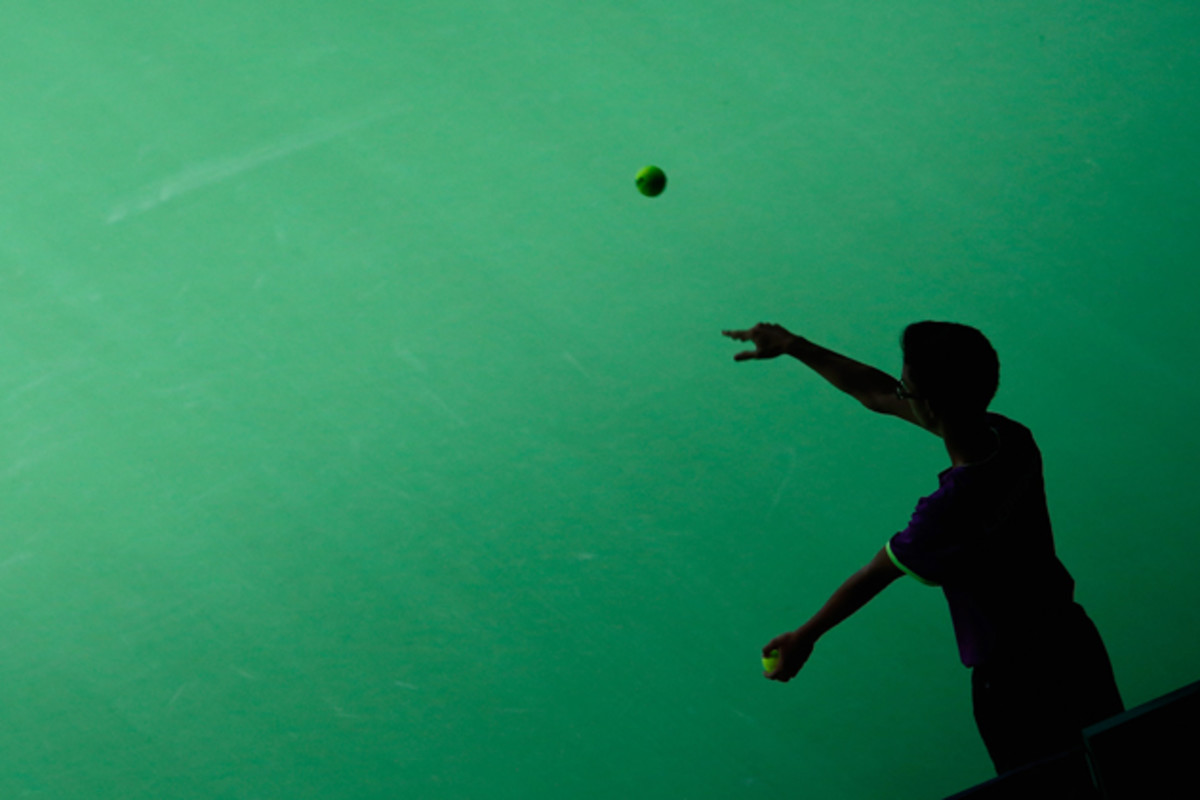WTA Finals in Singapore are played on unique wooden hard court surface

The 2015 WTA Finals begin on Oct. 25, as the top eight singles and doubles teams will compete for the year-end championship title in Singapore. At the 12,000-seat Singapore Indoor Stadium, wood plays a major role in the look and feel of the courts.
To create the show court at the center of the competition, the WTA brings in a temporary wood court with an acrylic playing surface from Haro Sports Flooring to create a true hard court for the top women in the world.

To transform the concrete flooring of the Singapore stadium into a hard court surface, workers use panels of wood that are seven feet by three-and-a-half feet in size and 82 pounds that connect with a special interlocking system. Below the parquet wood is a shock pad to give players a 20–25% shock absorbency for comfort without impacting the play of the ball.
Using the pad under the wood also evens out any undulations in the arena floor, allowing the weight of the wood to lay flat overtop. John Graham, managing director of California Sports Surfaces, the Boston-based parent company of court surface brands, such as DecoTurf, says that applying the acrylic playing surface directly on top of the German-made Haro wood still allows his company to create, fast, medium and slow hard courts based on the acrylic formula.
Caroline Garcia on traveling, home cooking and more ahead of Singapore
With the speed of a court determined by the coefficient of friction and coefficient of restitution, as calculated by the International Tennis Federation, Graham says they can tweak their court’s formula—in Singapore, they use DecoTurf surface—to meet the tournament’s desires, no matter the underlying surface.
The International Tennis Federation gives each court a speed determination, based on the amount of friction the surface creates with the ball and how much a surface draws bounce from a ball. Graham says tweaking their court’s formula—in Singapore, they use DecoTurf surfaces—they can meet a tournament’s desires for speed, no matter if on wood, concrete or otherwise. The temporary court is first created in a large Haro warehouse in Germany to make sure any imperfections are fixed prior to arriving at the WTA Finals.

“That way if there is any flaw in the wood, any warping or defect, we can replace it right there,” Graham says, “versus in Singapore when it would be a lot more difficult if we had a defect show up.”
Once perfected, each panel gets loaded into an individual custom-made crate and loaded into a 40-foot shipping container. It takes the operations crew about four hours to install the court once it arrives on site.
With six WTA, five major doubles titles in '15, Martina Hingis is on cloud nine
Graham said that in Singapore, the WTA will use its own special purple color for in-bounds play and a green hue—the Singapore folks have selected a brighter green than most other tournaments—for the out-of-bounds area.
“We fire up different pigment formulas and send them as dried examples and they pick from those samples,” Graham says.
Acrylic and wood combine for a different type of hard court in Singapore, a surface that holds the fate of the year-end championships at the 2015 WTA Finals.
TimNewcombcovers stadiums, sneakers and design for Sports Illustrated. Follow him on Twitter at@tdnewcomb.
